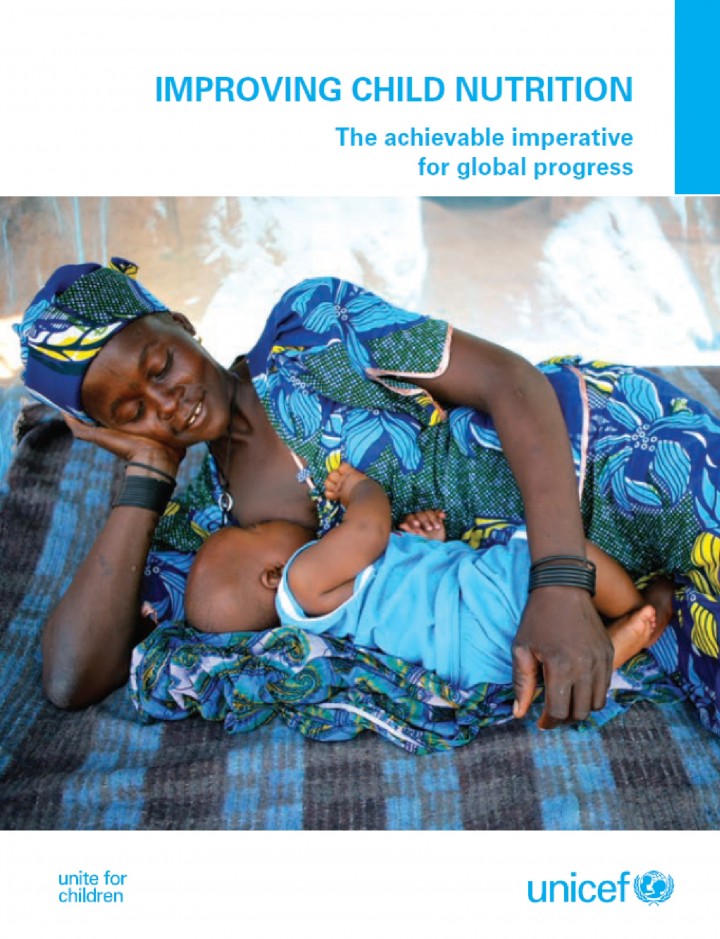Improving Child Nutrition The achievable imperative for global progress UNICEF (2013)
UNICEF’s 2009 report Tracking Progress on Child and Maternal Nutrition drew attention to the impact of high levels of undernutrition on child survival, growth and development and their social and economic toll on nations. It described the state of nutrition programmes worldwide and argued for improving and expanding delivery of key nutrition interventions during the critical 1,000-day window covering a woman’s pregnancy and the first two years of her child’s life, when rapid physical and mental development occurs. This report builds on those earlier findings by highlighting new developments and demonstrating that efforts to scale up nutrition programmes are working, benefiting children in many countries.
The publication gives an overview on the causes and consequences of undernutrition and the current state. Also, it lists possible interventions to address stunting and other forms of undernutrition and examples for successful implementation. Nutrition profiles for 24 countries with the largest burden and highest prevalence of stunting are given, which are: Bangladesh, Burundi, Central African Republic, China, Democratic Republic of the Congo, Ethiopia, Guatemala, Guinea, India, Indonesia, Liberia, Madagascar, Malawi, Mozambique, Nepal, Niger, Nigeria, Pakistan, Philippines, Rwanda, Sierra Leone, United Republic of Tanzania, Timor-Leste and Zambia.Bibliographic information
UNICEF (2013). Improving Child Nutrition The achievable imperative for global progress UNICEF
Filter / Tags
WASH and nutrition (WG12)English

